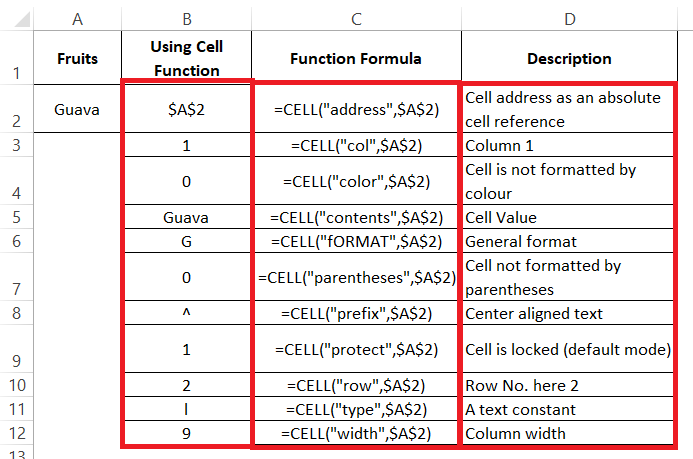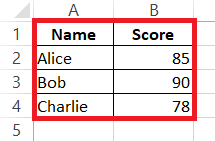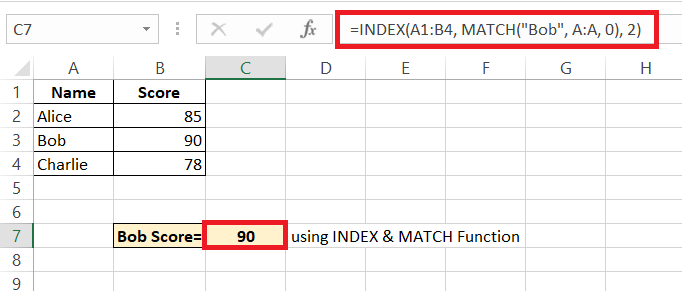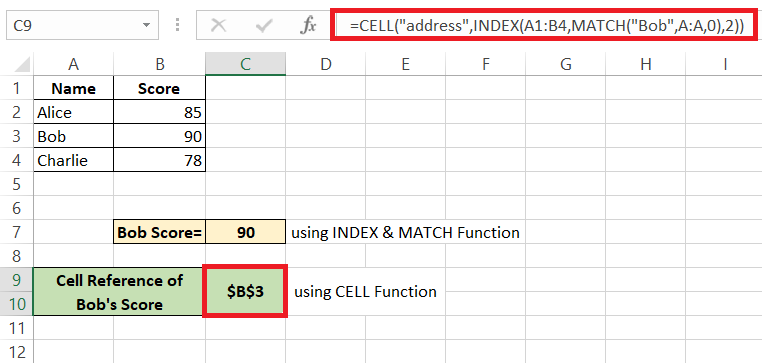The CELL function in Microsoft Excel is a powerful tool for extracting detailed information about a cell’s contents, formatting, and location. It transforms how you manage and interpret your data by providing insights that streamline reporting and ensure data accuracy. By understanding the CELL function’s syntax and applications, you can enhance your efficiency in handling Excel spreadsheets.
Key Takeaways:
- Versatility of the CELL Function: The CELL function retrieves various details about a cell, such as its address, format, and contents, making it a versatile tool for managing and auditing data.
- Enhancing Data Integrity: By providing specifics on cell contents and formats, the CELL function helps ensure calculations are accurate and data types are correct, which is crucial for data integrity.
- Advanced Lookup Operations: Combining the CELL function with INDEX and MATCH allows for precise data lookup and cell reference retrieval, surpassing the capabilities of VLOOKUP.
- Understanding Format Codes: Decoding the CELL function’s format codes, like “F2” for two decimal points or “D2” for dates, is essential for maintaining consistency across datasets, especially when dealing with different locales.
Table of Contents
Unlocking Excel Efficiency with CELL Function
What is the CELL Function?
The CELL function is a powerful tool in your Excel toolkit, serving as a beacon of information in the vast sea of data. Think of it as the detective of the Excel world – it delves into a cell and retrieves valuable clues regarding the cell’s contents, formatting, and other properties.
With two simple arguments, it can tell you whether a piece of information is a text or a numeric value, reveal the cell’s address, or even shed light on the file path of the workbook it resides in.
Why the CELL Function Can Be a Game Changer
Imagine having a behind-the-scenes guide to your worksheets, one that can instantly provide vital details about cells that might otherwise take time to uncover. That’s what the CELL function does, transforming the way you manage and interpret your data.
By furnishing specifics like whether cells contain formulas, text, or are formatted in a certain way, the CELL function helps ensure that your calculations are accurate and that you’re working with the correct data type. This level of insight is invaluable when you’re verifying data integrity after importing from external sources, or when you’re looking to streamline and automate reporting tasks.
Delving into the CELL Function Syntax
Breaking Down Syntax Elements
Understanding the syntax of the CELL function is like learning to decipher a special code that unlocks the mysteries of your spreadsheet. The formula follows a simple structure: CELL(info_type, [range]).
info_type: This is the key that tells the function exactly what kind of information you’re after. It’s a text string, such as “address”, “format”, or “contents”.[range]: Wrapped in square brackets, this optional parameter is a cell or range of cells you’re curious about. If you skip this part, Excel assumes you mean the currently active cell.
With these components, the CELL function marches off to gather the requested intel, bringing back a snippet of information that could change the way you look at a whole dataset.
Info_type Values Explained
Let’s take a stroll through the info_type options of the CELL function, your guiding compass to understanding cell characteristics:
"address": Find the cell’s reference – like a home address, but for your data."col": Reveals the column number where the cell lives – handy for navigation."color": Tells you if the cell is flagged for special formatting with color when negative."contents": Delivers the direct content value of the cell, even if it’s a calculated formula result."filename": Discloses the full path and the name of the workbook, that is, if it’s been saved."format": Shares a unique code that speaks volumes about the cell’s number format."parentheses": Indicates if there are parentheses wrapped around positive or all cell values."prefix": Shows the alignment of text through subtle markers like quotation marks or carets."protect": Gives you a heads-up if the cell has its defenses up, meaning it’s locked."row": Provides the row number, a simple yet often necessary piece of information."type": Classifies the cell as blank, label, or value – essential for data sorting."width": Measures the column width that the cell occupies, rounding off to an integer.
Each info_type comes back with its unique snippet of data, giving you a clear picture of the analyzed cell. This knowledge is a quiet superpower when organizing or auditing your spreadsheets.
Advanced Tricks with CELL Function
Formulas Involving CELL for Lookup Operations
Tapping into the CELL function for lookup operations is like unlocking a secret passage to advanced Excel wizardry. You can combine CELL with INDEX and MATCH for an extra layer of power. This trio can locate a value within a range and return its precise, absolute reference, a trick VLOOKUP can’t pull off because it stops at the cell value.
Say you need to trace the address of a cell with specific data; you concoct a formula that melds these functions together and voilà, you’re served with the exact cell location.
DATASET:
To find the cell address of Bob’s score (90), follow these steps:
STEP 1: Use INDEX and MATCH: =INDEX(A1:B4, MATCH(“Bob”, A:A, 0), 2). This will return Bob’s score (90).
STEP 2: To get the cell reference, combine with the CELL function:
=CELL(“address”, INDEX(A1:B4, MATCH(“Bob”, A:A, 0), 2))
You’ll get the absolute cell reference, like “$B$3”, showing Bob’s score is in cell B3.
Such formulas are particularly useful when you need to point to specific data within a large dataset, especially when creating dynamic named ranges or when you’re linking cells between different worksheets where static references simply won’t cut it.
Tips and Tricks to Avoid Common Pitfalls
Understanding Format Codes and Return Values
Getting cozy with format codes and return values is like learning the secret language of the CELL function. When you ask CELL about a cell’s “format”, it doesn’t spill the details in plain English but sends back a concise code. Decoding this can reveal whether the cell is formatted as currency, percentage, date, or any other number format.
For instance, “F2” whispers that the cell is with two decimal points, while “D2” hints at a date formatted as mm/dd/yy.
Understanding these codes can be quite crucial when ensuring uniformity across your datasets, especially before performing data merges or when transitioning between different locales that may use varied date or currency formats.
Troubleshooting CELL Function Errors
When you encounter roadblocks with the CELL function, it’s often a case of misunderstanding its expectations or overlooking its sensitivities. For instance, the CELL function can get finicky if the reference cell is not properly defined, leading to #VALUE! errors. Or perhaps it’s giving you an unexpected output because your worksheet was not recalculated after changes – remember, CELL is volatile and needs a refresh to update its findings.
Another hiccup could be the elusive #NAME? error, which typically suggests that Excel doesn’t recognize the info_type you’ve keyed in because of a typo or an incorrect use of quotation marks. It pays to triple-check your formulas for accuracy and to be mindful of how the CELL function behaves in different versions of Excel.
FAQ: Mastering the CELL Function
What is cell function in excel?
The CELL function in Excel is a formula that retrieves information about a cell’s content, formatting, or location. It’s quite versatile, providing details such as whether the cell contains a numeric or text value, its absolute address, or even information about the workbook’s file path if the cell is referenced.
How to use cell excel function?
To use the CELL function in Excel, enter =CELL(info_type, [reference]) in a cell. Replace info_type with the kind of information you need, like “address” or “format”, and [reference] with the cell you’re inquiring about. If [reference] is omitted, it defaults to the last cell changed.
When Should You Use the CELL Function in Excel?
Use the CELL function in Excel when you need to extract specific cell details, such as format or location, automate reporting, or ensure data types are correct before analysis, to make your worksheets dynamic and error-free.
What Are Some Common Issues Users Face with CELL Function?
With the CELL function, users commonly face issues like the #VALUE! error due to invalid references, or unexpected results when the worksheet isn’t recalculated, given its volatile nature. Ensuring correct usage of info_type and regular sheet updates can help mitigate these issues.
Why is cell function not working in excel online?
The CELL function might not work as expected in Excel Online if the specific info_type argument used is not fully supported. Since Excel Online has some limitations compared to the desktop version, certain functions and features might operate differently or have restricted functionality. Always check for the latest updates or use the desktop app for full features.
John Michaloudis is a former accountant and finance analyst at General Electric, a Microsoft MVP since 2020, an Amazon #1 bestselling author of 4 Microsoft Excel books and teacher of Microsoft Excel & Office over at his flagship MyExcelOnline Academy Online Course.












